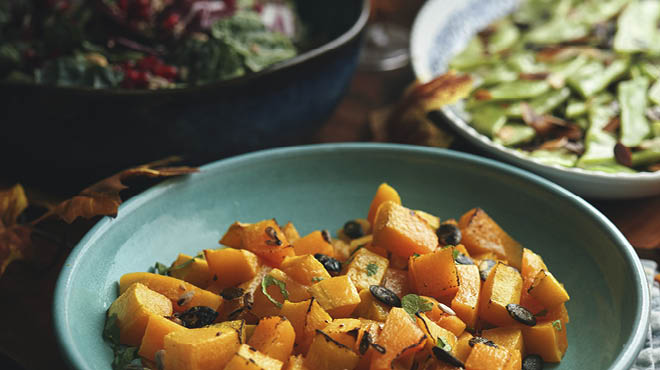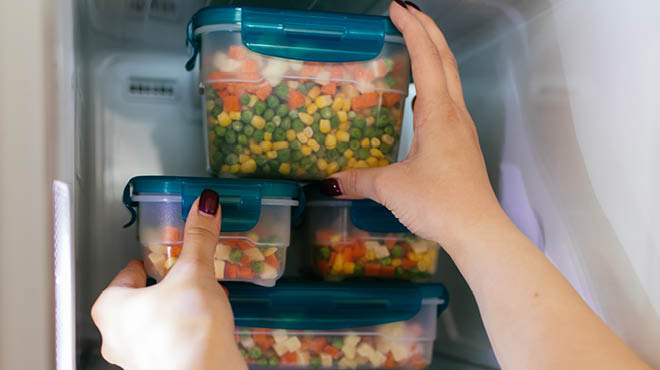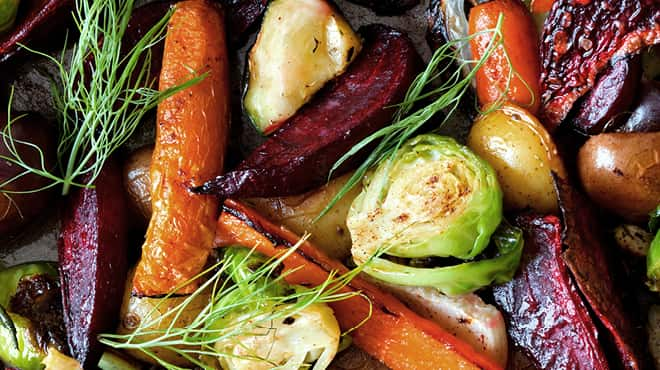Recent Posts
Boost vitamin C with in-season citrus

Do you know how vital vitamin C is for your health? Vitamin C, also known as ascorbic acid, is an essential nutrient and antioxidant.
Here's how vitamin C helps your body:
- Assists in forming blood vessels, cartilage, muscle, collagen in bones and absorbing iron.
- Helps your cells fight free radicals, which are molecules produced when your body breaks down or is exposed to tobacco smoke or radiation from the sun.
- Promotes the healing process.
- Protects against heart disease and cancer.
Vitamin C isn't made in your body, so you need to eat foods that are good sources of this nutrient. A vitamin C deficiency can lead to a disease called scurvy, which can cause anemia, bleeding gums, bruising and poor wound healing.
The recommended amount of vitamin C is 90 milligrams a day for adult men and 75 milligrams a day for adult women. Most people can get enough vitamin C from a healthy, balanced diet. If you're taking vitamin C supplements, talk with your healthcare team, since too much vitamin C can have side effects and cause medication interactions.
Citrus and medication interaction
Grapefruit and other citrus fruits, such as Seville oranges, can interfere with several kinds of prescriptions. The severity of the interaction differs depending on the person, medication and amount of grapefruit or grapefruit juice you consume. If you have questions, talk with your healthcare professional or pharmacist. Be sure to read the information provided with your prescription or over-the-counter medication.
How to get your vitamin C
You can find vitamin C in citrus fruits, including oranges, clementines, pineapple, grapefruit, lemons and limes. Berries, potatoes, tomatoes, peppers, cabbage, Brussels sprouts, broccoli and spinach also are good sources.
Incorporating foods rich in vitamin C into your daily routine may be easier than you think. Many of these fruits and vegetables can be stored at room temperature for a few days.
An orange or a few clementines make an easy grab-and-go snack. Add a lemon or lime to your water to increase flavor as well as vitamin C. Citrus and other vitamin C foods brighten main dishes, salad dressings, desserts and beverages.
Although citrus fruits are typically available throughout the year, some citrus varieties are at their peak during the winter months:
- Oranges
Depending on the variety, they're best from November through April. - Clementines
These easy-to-peel fruits are at their sweetest and juiciest from November through January. - Grapefruits
The season for ruby reds runs from October through April,. dark red grapefruit is best from November through March. while the season for white grapefruit is from November through February.
Citrus-centric recipes to boost vitamin C
These recipes, with their focus on citrus, are high in vitamin C:
Citrus Salad
By Mayo Clinic
Serves 4
2 oranges
1 red grapefruit
2 tablespoons orange juice
2 tablespoons olive oil
1 tablespoon balsamic vinegar
4 cups mixed greens
2 tablespoons pine nuts
2 tablespoons chopped mint for garnish (optional)
Working with one piece of fruit at a time, cut a thin slice off the top and bottom, exposing the flesh. Stand the orange upright and, using a sharp knife, cut off the peel, following the contour of the fruit and removing all of the white pith and membrane. Holding the orange over a small bowl, carefully cut along both sides of each section to free it from the membrane. As you work, discard any seeds and let the sections and any juice fall into the bowl. Repeat with the remaining fruit.
In a separate bowl, whisk together the orange juice, olive oil and vinegar. Pour the mixture over the fruit segments and toss gently to coat evenly. To serve, divide the greens on each plate, top with fruit and dressing, and sprinkle each with 1/2 tablespoon of pine nuts. Garnish with chopped mint and serve immediately.
Nutritional per serving (1 cup greens and about 1/2 cup fruit): 166 calories, 10 grams fat, 17 grams total carbohydrate, 3 grams fiber.
Roasted red bell pepper pineapple salsa
By Mayo Clinic
Serves 4
1/2 cup chopped roasted red bell pepper
1 cup chopped pineapple
1/4 cup finely chopped fresh cilantro
1/4 cup finely chopped red onion
2 tablespoons diced jalapeño pepper
2 teaspoons honey
1/4 teaspoon salt
In a medium bowl, combine all ingredients and mix well. Cover and refrigerate until served.
Nutritional per serving (1/4 cup): 40 calories, 40 grams total fat, 125 milligrams sodium, 10 grams total carbohydrate, 1 gram fiber, 1 gram protein.
Amanda Halls is a registered dietitian nutritionist in Nutrition Services in Lake City, Minnesota.







